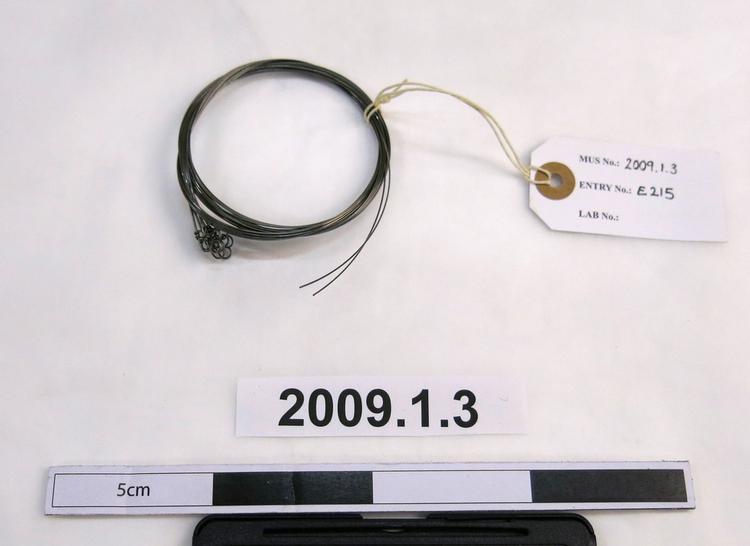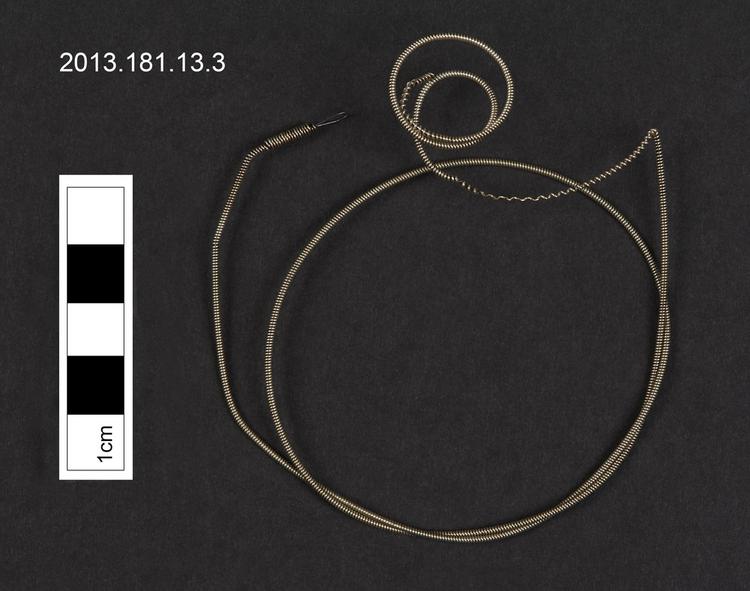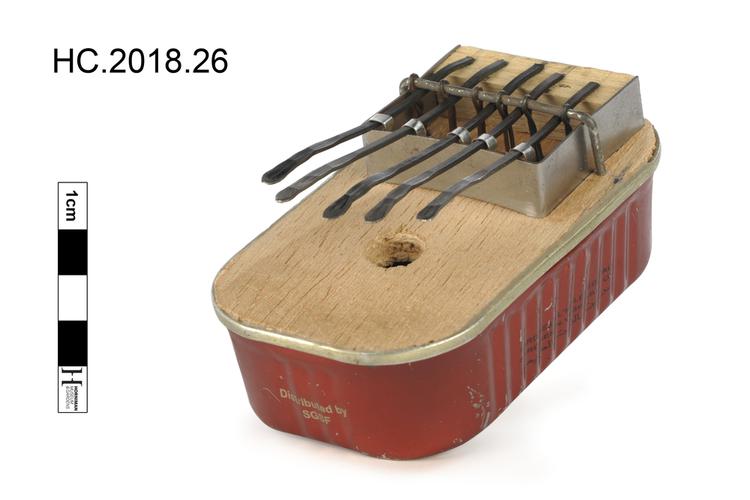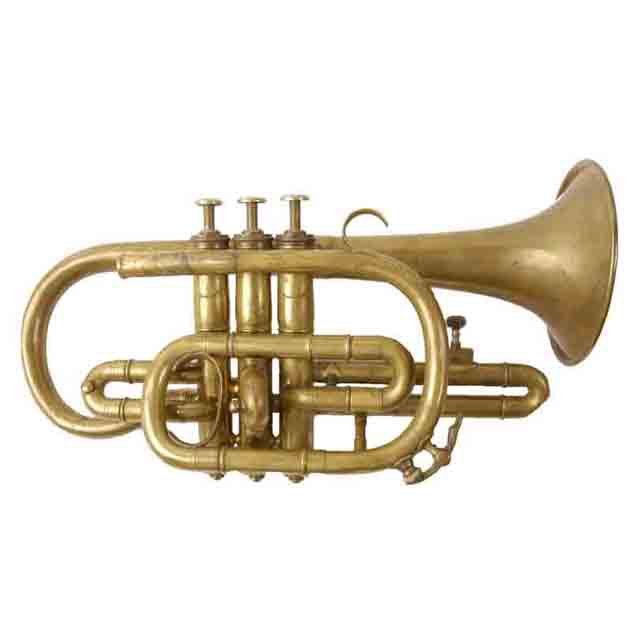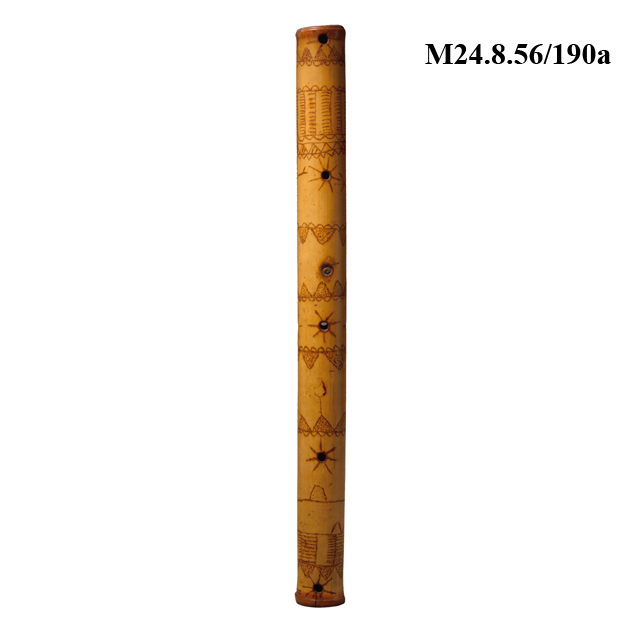
Large diameter nose flute of bamboo construction from a single interned which is closed at both ends. The flute has been pierced with a column of six holes, one for the nose and five for fingering. The central hole in the column forms a circumferential ring with two others. The surface is pyrograved in a coarse design of circumferential triangles arranged in four rows. The ends are decorated with panels of hatching.
The dulali is a nose flute from Fiji. According to Fijian custom, the invention of the instrument is usually attributed to one the gods of Fijian mythology. Nose flutes are transverse flutes that are operated by nasal breath, one of the end holes being placed beneath the player's nostril. Similar instruments are found on a number of Pacific islands and in many South-east Asian cultures. The musical instrument historian Curt Sachs speculated that their appeal stemmed from the magical or religious associations of human breath. Despite its central status in Fijian culture, use of the dulali declined dramatically throughout the second half of the 20th century and it is now a rarity on the islands.




